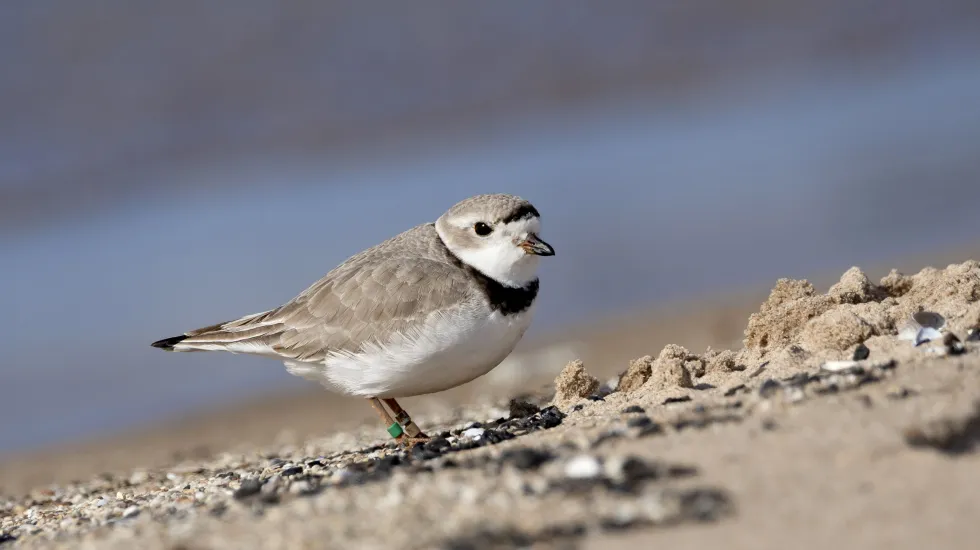
A new piping plover was spotted on Rainbow Beach late Tuesday afternoon, but it may have been just a rest stop, not a nest stop.
It was the first known sighting in the area since the famous plover couple, Monty and Rose, departed Montrose Beach on the North Side last year.
The newest plover was identified Wednesday by the University of Minnesota Great Lakes Piping Plover Conservation Team as Of,bY:X,G, a 5-year-old female. She has nested since 2018 at Michigan’s Sleeping Bear Dunes National Lakeshore, in its Maritime Museum area, and winters in Lee County, Florida.
After the Tuesday appearance in Chicago, the bird apparently continued on to Sleeping Bear Dunes, where it was spotted Wednesday morning.
The bird was spotted at the South Side beach by bird enthusiast Ian Sarmiento, who was at the beach searching for a different rare bird when he saw the familiar look and movement of a piping plover.
“I stood there on the ground, waiting for it to move. I didn’t want to disturb it because I know it’s traveled a thousand miles so I wanted to let it rest,” Sarmiento said. “So I waited for it to stand up so I could see the leg bands, and sure enough.”
Those working to protect piping plovers place bands on their legs to help track and identify the birds, said Tamima Itani, vice president and treasurer of the Illinois Ornithological Society.
The most recent spotting of a piping plover, an endangered species, was first reported by Block Club.
Chicago Ornithological Society President Edward Warden will lead a cleanup at Rainbow Beach on Saturday. He said Rainbow Beach is considered by some experts to be the next most likely place, following Montrose Beach, for piping plovers to show up and potentially nest.
A new sighting of a piping plover is encouraging, Warden said.
“This plover showing up to Rainbow isn’t necessarily a sign that plovers are going to nest there this year, or the next,” Warden said. “But it’s still just a great sign to see them there, using the space, and using it as part of fueling up for what is otherwise a very arduous migration journey.”
Armand Cann, biologist with the U.S. Fish and Wildlife Service, said the sighting means Rainbow Beach is likely a suitable habitat for plovers, to pass by and feed and rest.
Monty and Rose, who nested on Montrose Beach for three years, may also be heading to Chicago soon, said Kristen Vale, the Texas coastal program coordinator for the American Bird Conservancy.
Vale monitors Monty in Texas, where he winters in two territories — Bolivar Flats Shorebird Sanctuary during low tides, and East Beach in Galveston during high tides. He was last spotted at Bolivar Flats in early April, Cann said.
“It doesn’t mean he’s not somewhere else nearby that I missed,” Vale said. “But it does make me hopeful that maybe he’s taking advantage of our current strong Southeast winds that could help push him to Chicago.”
Cann said the last time Monty was spotted, he was in breeding plumage. Plumage describes a bird’s feather coloration and pattern.
“We know he’s likely to be making the migration north relatively soon,” Cann said. “We don’t know the exact dates, but if he’s in breeding plumage, he’s definitely ready.”
Rose hasn’t been spotted since October 2021, Bob Dolgan, director of two documentaries about Monty and Rose said. She winters in Anclote Key, Florida.
Dolgan said this doesn’t mean Rose isn’t there. Anclote Key is harder to access than Monty’s territory. Regardless, it will be time for her to move north soon.







